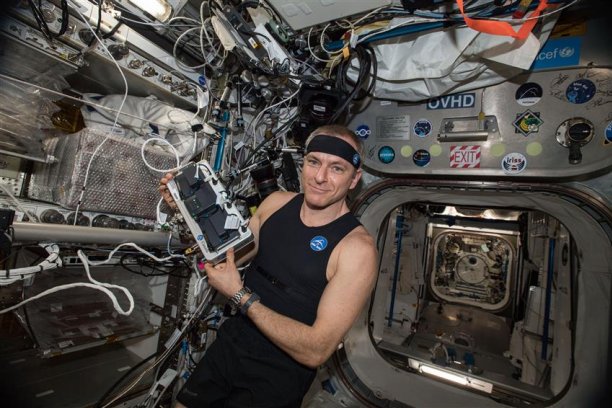
Closer to transparency
Heating still accounts for over 80% of the market’s value in 2023.

27th November 2023
Innovation in Textiles
|
Boston, MA, USA
Electronic textiles, or e-textiles, have come a long way from heated blankets which were commercialised in the 1960s and 70s and have advanced to include state-of-the-art smart shirts that monitor astronauts aboard the International Space Station (ISS).
The road has not always been smooth for e-textiles, however, and companies in the field have yet to find a new application that matches the success of textile heating, according to Dr Tess Skyrme, senior technology analyst at IDTechEx.
“Today, heating is still the most successful application for e-textiles, accounting for over 80% of the market value in 2023,” she observes. “From motorcycle riders to outdoor workers to those enjoying snow sports, heated clothing provides much-needed warmth in cold winter conditions. Heated blankets have also been popular for several decades, and interest has been spurred on in recent years by drastic rises in energy costs.”
The success of heating as an application of e-textiles is due to the technology’s ability to provide local heating in a comfortable form factor, she adds. Compared to alternatives, such as heating an entire room (costly), to hand warmers (only heating a small area), to simply wearing more clothing (bulky), heated textiles leverage the strengths of both textiles and electronics.
While power supply remains a key problem in this application, with users having to either carry a rechargeable battery or be tethered to a power source, the increasing availability of portable USB power banks is helping to drive heated apparel to consumers. IDTechEx forecasts a steady growth in heated textile applications to 2033, with a CAGR of 4.5%.
Biometric sensors
One of the applications for e-textiles that has seen the most interest, advancement and promise over the past decade is in biometric sensing. The integration of various sensors into apparel can enable the monitoring of key vital signs, including heart rate, respiration rate and body temperature. Investor interest in sports and fitness applications for e-textiles increased through the early 2010s, but several issues, including cost and washability, have since hindered major sporting goods companies from commercialising the technology for the mass market.
While smart shirts can monitor key vitals for sports applications, alternative technologies, such as smartwatches, have since caught up and are able to replicate most of the biometric sensing required. Not only do smartwatches have more functions than a smart shirt, they also offer more reusability and flexibility.
Companies are instead looking at monitoring vital signs for applications where the information is critical, from healthcare through to worker safety.
“Electrodes embedded within smart vests can monitor the vitals and heat-stress of workers in extreme environments,” says Skyrme. “This is critical data for mission control needing to know that the wearer’s cognitive abilities are intact in high-stress situations such as firefighting. Of course, the smart shirts can also be applied to studying how the human body responds to extreme situations, such as astronauts on the ISS.”
The typical challenges that smart garments for consumers face – such as having to wear the same outfit every day or high unit costs – become less important when the garment is a part of a uniform, or when the data is critical and cannot be replicated as easily or as accurately by alternatives.
Smart insoles
Another area where e-textiles can truly leverage their unique strengths of comfort, softness and function is in smart insoles. Smart insoles are applied for both gait monitoring and diabetes management applications. While other wearables can monitor gait, pressure-sensing insoles measure a person’s motion symmetry and force distribution, allowing medical professionals to assess progress in recovery from injuries that hinder mobility. When combined with temperature sensors, these smart insoles utilise points of elevated pressure and/or temperature to warn doctors of potential ulcer formation.
The remote monitoring of ulcers can help people with diabetes, who are at risk for developing non-healing ulcers that eventually result in amputation. However, while the market for diabetes management technologies will be worth over $30 billion by 2033, it is unlikely that smart insoles will capture much of it, leaving e-textiles manufacturers continuing their hunt for a runaway success.
“To deliver a compelling product, companies must leverage both the advantages of textiles and the function of electronics through textiles,” Skyrme notes in conclusion. “However, there are many readily available alternatives, including the use of devices to simply attach to clothing. To date, key successes have been found in applications where the aesthetics are of less importance, where washability is not a major concern, and where the value is both critical and cannot be replicated by other means.”
The IDTechEx report, E-Textiles and Smart Clothing Markets 2023-2033: Technologies, Players, and Applications, covers this sector in detail.

Business intelligence for the fibre, textiles and apparel industries: technologies, innovations, markets, investments, trade policy, sourcing, strategy...
Find out more